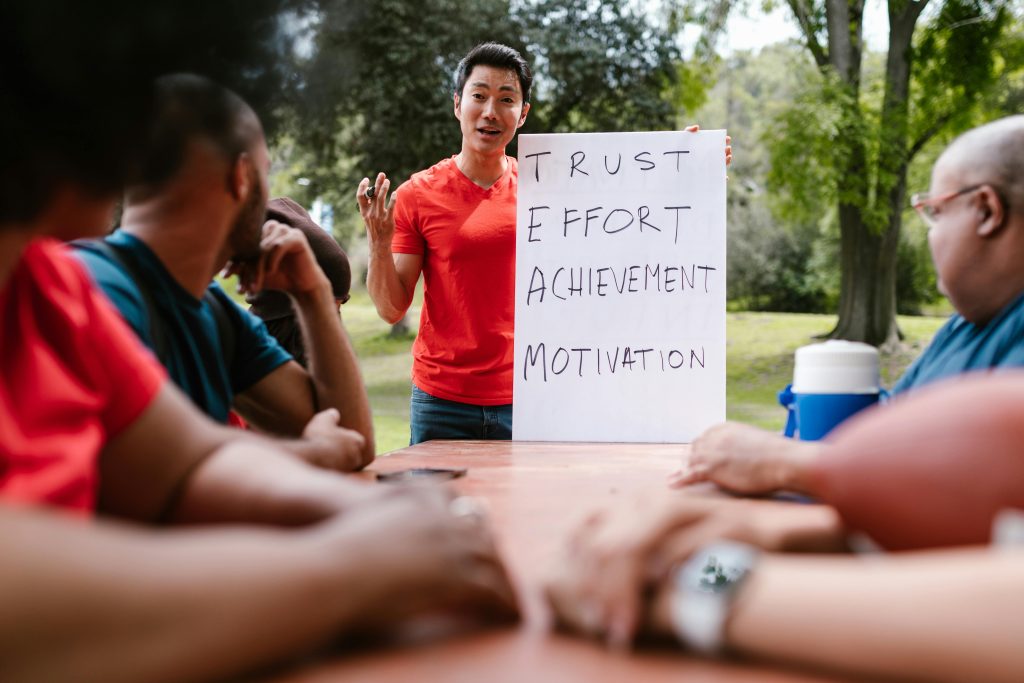Active Trust: The Cornerstone of EPIC Leadership
If you haven’t had a chance to read the last post, I suggest you do that first because it lays the groundwork for today’s post – where I’m going to challenge the way you think about everyday concepts and how they relate to your leadership. Because if you want uncommon results, you have to break with the common understanding that most people have about these critical elements of leadership.
3. Consideration: Trust Through Understanding
True Consideration goes beyond “servant” or ”empathetic” leadership. It’s more than just exhibiting kindness, courtesy, surface-level empathy, and respect. It’s genuinely caring about your team and understanding what motivates each of them to properly align their goals with yours and the company’s. It means true forgiveness, using the Platinum Rule, being willing to give them away if it benefits them, training them to do your job even if you feel threatened, and more. True consideration is a strategic component of great cultures.
As I write in the book, “You can’t make an Afghan warlord or a Russian colonel do what you want—they are lions! But you can lead by influence, using trust to align their interests with yours.” That’s how Green Berets achieve the impossible.
This insight is as relevant in the boardroom as it is on the battlefield. If you don’t take the time to get to know your team on a personal level, you’ll never understand what truly drives them. Without that understanding, your ability to motivate and align their efforts with organizational goals is fundamentally limited.
To get to know someone deeply, you must invest time in building a genuine connection. This goes beyond annual performance reviews or casual check-ins. It requires meaningful conversations where you listen more than you speak.
It’s not just about recognizing their contributions; it’s about demonstrating that you value their perspectives and priorities.
When you don’t know your people, you risk creating a disconnect between their personal motivations and the organization’s objectives. This misalignment can lead to disengagement, resentment, and ultimately, turnover. If you don’t know who your team members are, you won’t be able to inspire them to invest in the shared mission.
4. Coaching: Developing Individuals and Teams
Coaching is more than teaching skills or giving instructions—it’s about unlocking potential, fostering growth, and building a resilient, high-performing team. In Chapter 5, Leading and Training, coaching is presented as a cornerstone of elite leadership. It’s not just a task; it’s a mindset grounded in humility, courage, and a deep commitment to the success of others.
At its core, coaching is about generosity. It requires leaders to invest their time, energy, and expertise in their team members, not for immediate returns, but to cultivate long-term growth. This generosity means encouraging team members to take on challenges, make mistakes, and learn from their experiences. After all, growth doesn’t happen in the comfort zone—it happens when people stretch themselves and occasionally falter.
True coaching demands humility. It’s not about asserting dominance or showcasing your expertise—it’s about stepping back and allowing your team to shine. Great leaders don’t create followers; they create other leaders.
It also takes courage. Courage to let your team take risks, courage to confront their mistakes constructively, and courage to accept feedback yourself. Leaders who coach effectively aren’t afraid of being challenged or questioned because they know that fostering a culture of continuous growth benefits everyone.
When coaching is done right, it transforms not only individuals but the entire team. It fosters a culture where growth is celebrated, feedback is welcomed, and failure is seen as a stepping stone rather than a dead end. A team that feels supported in their development will trust their leader—and each other—more deeply.
This requires discipline. Effective coaching isn’t sporadic; it’s a consistent, intentional effort to guide and mentor team members. It also requires the leader to model the behavior they want to see, demonstrating a commitment to their own growth alongside the team’s.
Letting Mistakes Happen
One of the hardest parts of coaching is allowing mistakes to happen. It’s tempting to step in and correct errors before they occur, but this robs team members of valuable learning opportunities. Mistakes are part of the process. Leaders who coach effectively create a safe environment where team members feel empowered to try new things, even if they don’t succeed at first.
The Generosity of Coaching
Coaching isn’t just about improving performance—it’s about giving back. It’s about recognizing the potential in others and nurturing it until it flourishes. Leaders who coach with this spirit of generosity create teams that are not only skilled but also deeply connected and motivated.
As I write in the book The Green Beret Way, “Discipline may equal freedom, but discipline dies without purpose.” Coaching provides that purpose, aligning individual growth with the team’s mission and creating a shared sense of accomplishment.
By coaching with humility, courage, and generosity, you can build a team that thrives under pressure and achieves the extraordinary.
This doesn’t mean micromanaging. It means providing the tools, resources, and support your team needs to excel. Coaching is about trust in action: empowering others to succeed and stepping back to let them shine.
Conclusion: The Power of Trust
Trust is the foundation of elite leadership. It’s not something you hope for—it’s something you build intentionally. As The Green Beret Way teaches, trust starts with character, grows through communication and consideration, and thrives when leaders coach their teams to succeed.
Whether you’re leading a military unit, a corporate team, or a startup, trust is your most valuable asset. Build it, protect it, and watch your team achieve the extraordinary.




